Reason 4 has a real jewel among its newest features.
Yes, another Reason 4 post. I just feel the need to get the word out there. This is some serious stuff, and it might be all you need! Here is another cool set of tools that can be found in Reason version 4.
The Mclass mastering suite is no joke. Within the list of Mclass effects is everything that you should need to get your Reason tracks pumping. Lets dive in and see just what the Mclass mastering suite is all about.
You can either open up each Mclass mastering effect separately, and work with them one at a time, or the coolest part is that you can open up a Combinator preset, titled “M-Class Mastering Suite Combi”, and then simply create the effects that you need, one after the other right inside the Combinator itself. This makes saving your new Combinator mastering suite of instruments (after you get it set up and dialed in just right) a breeze. Opening this precious tool each time, with each new song that you create will now be a snap, or should I say a click?
For you “mastered” Reason users out there, you may know that each dial of these effect units, or each setting that you make often, can be sent to, and controlled by, a midi controller and midi playback. This opens up all sorts of possibilities for dynamic madness. Things like sweepable mid's on the Mclass EQ come to mind, or how about changing the stereo field on the Mclass stereo imager for a cool effect, and that is just a starting point.
Mclass Equalizer.
The Mclass EQ is an awesome tool as it has all sorts of controls, as you might expect with a Reason EQ. Tweaking with the settings is fun to say the least. The parameters include a low cut filter, low shelf, and a hi shelf filter, with a total of 4 bands. The FQ range starts at 30 HZ and rises up to 12KHZ. Everything you need to adjust, as a mastering EQ is represented here.
The workings are simple. You dial in the FQ that you wish to impact, set the “Q” to sharp or soft knee, and then raise the gain till it sounds sweet. Boom, you be done and you be moving on.
Mclass Stereo Imager.
This tool took some getting used to. This device allows you, the user, to split your FQ range at a specified “cutoff” FQ and then send the highs and the lows FQ's to their own stereo field. This is perfect for keeping the bass in the center, or mono like, and the higher FQ's to a wider stereo field. This is an open palette that begs for you to be as creative as you can be, and then settle for what sounds best. Very cool indeed!
Mclass Compressor.
Well, what can I tell you that you do not know about compressors? This is your usual suspect, with ratio, attack, threshold, and release dials, and both an input gain and a gain reduction, gain increase knob for your overall level control. This compressor does do a great job however, and it sounds great too!
Mclass Maximizer.
Don't limit yourself! This “look ahead limiter” is just what I was looking for within reason. With 4ms of look ahead capabilities, an input and output gain makeup, slow, mid, and fast attack and release settings, and a soft clip option, what else do we need? Well, one thing that is very cool is that you can toggle the “peak and VU” options on the meter readings. Very handy I thought, for seeing just where the clip is happening.
These tools are not a new creation by themselves. The good news is that we can now call these tools up anywhere in our Reason rack. They are not just mastering devices. I have longed for such tools, like back in my Reason 2.0 days, and now that I have them I use them extensively. I like the “color” that they put to my Reason works, and they just allow us all to get that much more creative as we work along. The Combinator idea is a smoker, and thanks Propellarhead for being so darn imaginative!
Thanks for stopping by, and remember to subscribe today, and please feel free to leave me some of your comments. I always love hearing from all of you! Tell your friends about Home Recording Weekly too!

 The Aqua Puss analog delay pedal from Way Huge Pedals. This is a re-issue of the classic. This is one of the best sounding, easiest to use, delay pedals that I have ever come across in all of my days. Check out the “borrowed” video below.
The Aqua Puss analog delay pedal from Way Huge Pedals. This is a re-issue of the classic. This is one of the best sounding, easiest to use, delay pedals that I have ever come across in all of my days. Check out the “borrowed” video below.  How about the TunerGaurd for a cool new product? I have never liked soft cases for storing my guitars, or for taking them to a gig, but this product makes them a little bit more practical. The only question that I have is what took so them so long? Well, wait.... I never thought of inventing this, so I guess they did just fine! If you have a new or a classic guitar that you wish to protect in transit, then look up the good folks over at Tuner guard. They will save you lots of time, money, and frustration in the long run!
How about the TunerGaurd for a cool new product? I have never liked soft cases for storing my guitars, or for taking them to a gig, but this product makes them a little bit more practical. The only question that I have is what took so them so long? Well, wait.... I never thought of inventing this, so I guess they did just fine! If you have a new or a classic guitar that you wish to protect in transit, then look up the good folks over at Tuner guard. They will save you lots of time, money, and frustration in the long run!
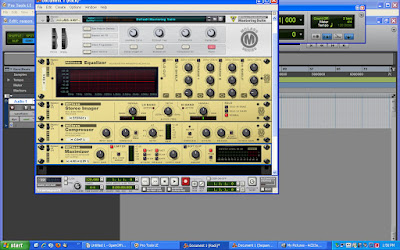






 Common; more individual pedals, when used correctly, can be all you will ever need
Common; more individual pedals, when used correctly, can be all you will ever need First of all, the stage tuner pedal. This has a bright, well illuminated display readout so we can read it from a standing position. Perhaps the most important feature here, is the true bypass feature. You don't want the crowd to hear you tuning up, or tuning to an altered tuning, after each song. These pedals take your instrument out of the loop, so to speak, and allow you to make adjustments in quiet.
First of all, the stage tuner pedal. This has a bright, well illuminated display readout so we can read it from a standing position. Perhaps the most important feature here, is the true bypass feature. You don't want the crowd to hear you tuning up, or tuning to an altered tuning, after each song. These pedals take your instrument out of the loop, so to speak, and allow you to make adjustments in quiet. Second on my short list is a good boost pedal. Basically any pedal that increases your instruments output voltage will work. These pedals do two major things. First, they increase the out put in order to make up for voltage drop along our miles and miles of cables. The second thing these pedals do is to boost the signal of your instrument in order to “ever so slightly” overload your amp. Any amp in this world sounds better with just the right amount of boost. The sound that we are talking about here is a slight warming up and note definition, right up to a true tube breakup.
Second on my short list is a good boost pedal. Basically any pedal that increases your instruments output voltage will work. These pedals do two major things. First, they increase the out put in order to make up for voltage drop along our miles and miles of cables. The second thing these pedals do is to boost the signal of your instrument in order to “ever so slightly” overload your amp. Any amp in this world sounds better with just the right amount of boost. The sound that we are talking about here is a slight warming up and note definition, right up to a true tube breakup. Third on the list is the all powerful compressor. We all know that compressors reduce the attack, or the first “picked” part of a note. But what else are they good for? Well, these gems take the dynamics of a piece, and reduce them down to a steady pouring out of notes. The highs and lows of a progression come down and come up in volume, and just flow better. The overall sound of a mild compressor in your signal path will just add a professional quality to your sound. Think about this pedal as a smoother upper, and a cleaner upper, for your instrument.
Third on the list is the all powerful compressor. We all know that compressors reduce the attack, or the first “picked” part of a note. But what else are they good for? Well, these gems take the dynamics of a piece, and reduce them down to a steady pouring out of notes. The highs and lows of a progression come down and come up in volume, and just flow better. The overall sound of a mild compressor in your signal path will just add a professional quality to your sound. Think about this pedal as a smoother upper, and a cleaner upper, for your instrument.
 Some say that the most often missing effect pedal in everybody elses' pedal board is a volume pedal. The volume on your instrument is great for adding definition to, or taking the bite out of the output. But what if you wish to keep the exact sound of your rig the same as you get louder for the chorus, and mellow down for the verses?
Some say that the most often missing effect pedal in everybody elses' pedal board is a volume pedal. The volume on your instrument is great for adding definition to, or taking the bite out of the output. But what if you wish to keep the exact sound of your rig the same as you get louder for the chorus, and mellow down for the verses?

 What tones do you need to have? What pedals do you need to have? The answers are questions that you need to ask yourself. Are you in a cover band? Do you play your original music out in clubs? Do you record at home? Do you write and play any one style of music, or do you write all types of music? These are the money questions.
What tones do you need to have? What pedals do you need to have? The answers are questions that you need to ask yourself. Are you in a cover band? Do you play your original music out in clubs? Do you record at home? Do you write and play any one style of music, or do you write all types of music? These are the money questions. If you think that you might like a mild chorus, delay, flanger, distortion, whammy, etc, then add it to your stages' real estate space. I can't tell you which of these effect pedals to purchase, nor will I tell you how to get a sound like someone else has.
If you think that you might like a mild chorus, delay, flanger, distortion, whammy, etc, then add it to your stages' real estate space. I can't tell you which of these effect pedals to purchase, nor will I tell you how to get a sound like someone else has. Point is, you just gotta find out for yourself.
Point is, you just gotta find out for yourself.




 Reasons cable patching for today's post.
Reasons cable patching for today's post.
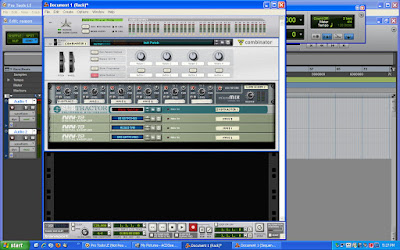 Collapsed view of Combinator and instruments inside it.
Collapsed view of Combinator and instruments inside it.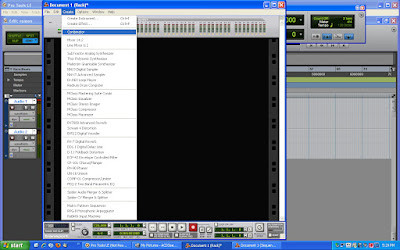
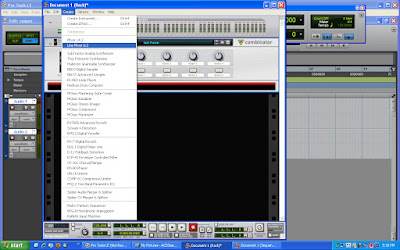
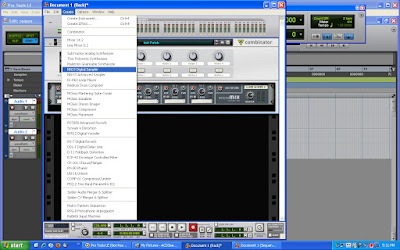
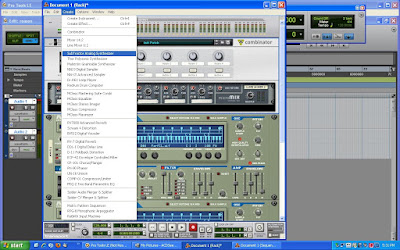
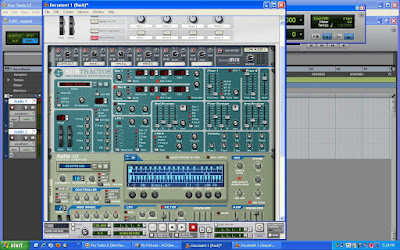 Combinator patch created, without reverb above, with reverb below.
Combinator patch created, without reverb above, with reverb below.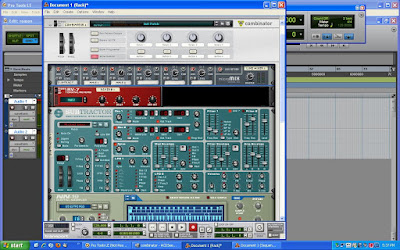
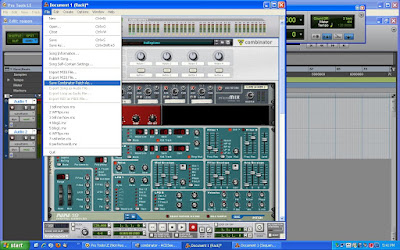 Saving the new Combinator patch.
Saving the new Combinator patch.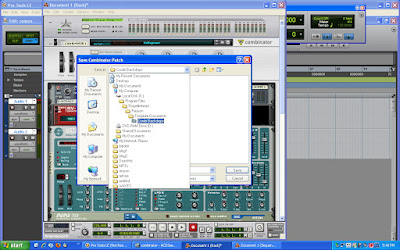 Combinator backdrops folder.
Combinator backdrops folder.
